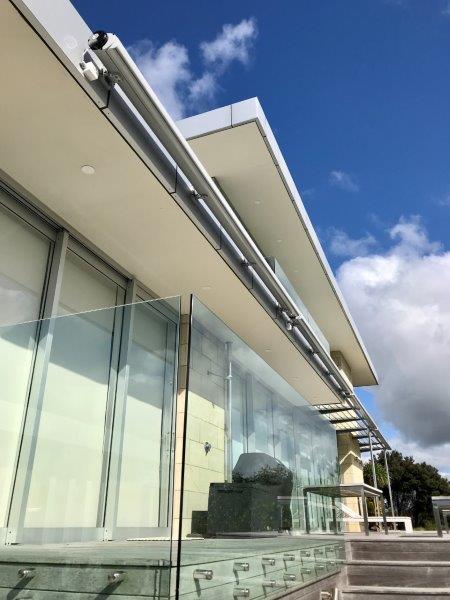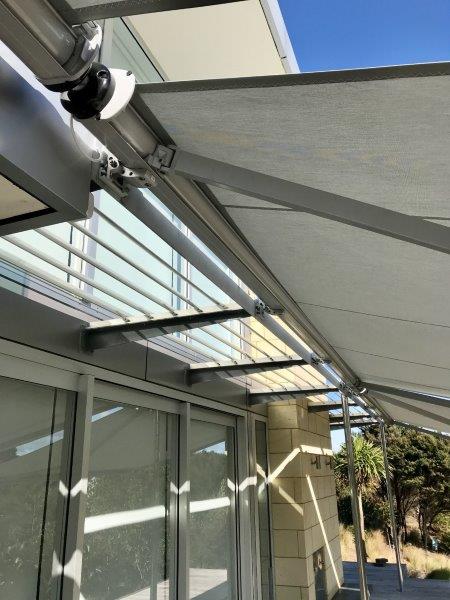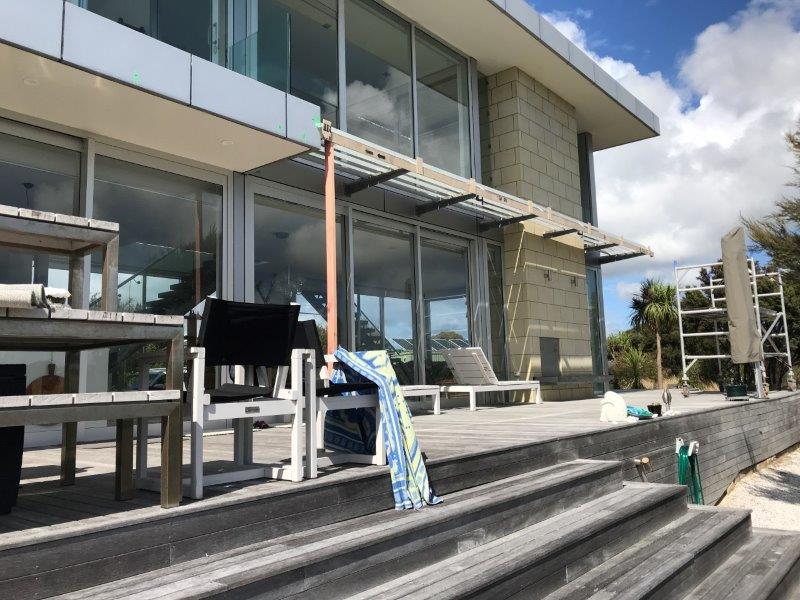Fabric Structures
Project name: Tern Point Shade Renovation
Material used: Docril
Fabric Supplied by: QCD Ltd
Components Supplied By: Reid & Twiname Ltd
Project name: Tern Point Shade Renovation
Material used: Docril
Fabric Supplied by: QCD Ltd
Components Supplied By: Reid & Twiname Ltd
What did the client request?
We were approached by clients who required shade solutions for their coastal property.The home had been architecturally designed and built around the north facing aspect and proximity to the ocean and sand dunes of the Mangawhai harbour.
Extensive glazing and minimal cladding had been used to capitalise on the view but had consequently caused issues with high UV exposure and heat build up.The clients were looking for options that could:
The clients had shown a preference for Cassette Retractable Awnings after our discussions and considerations of their needs.


What is unique or complex about the project?
From our first visit to the property we quickly discovered it was going to be impossible to attach the proposed awnings without serious alterations and engineering considerations.
This was mainly due to:
With this in mind we met with the architect, engineer and builder and came up with a plan to:
With this plan in place our aim was to attach the awnings to the building in a way that was streamlined with flow of the home and did not look like an add on.
Powdercoating and material colour choices were chosen to match the claddings colour tones.
We ran into a couple of challenges during the course project. The first was the awning brackets on the chosen brand had fixed mounting positions. This meant that we didn’t have flexibility in mounting unlike a standard awning and also made it challenging for the builder to attach the packers where needed.
The second issue we had was the initial steel mounting bracket that was attached to the louvres started to flex at a certain awning projection during our first trial.


What were the results of the project?
Our first consultations on this project had come about shortly before the first Covid lockdown and subsequently progressed following as best possible during the course of over a year.
As the build was just across the Auckland boundary of Mangawhai we could not access the site for the majority of the build and alterations. We overcame this by regularly meeting with everyone involved via online conference calls and continually discussing progress with the clients.
Following our initial trial installation the clients were concerned but the engineers remade the mounting plates and we finally managed to install the awnings when the Auckland lockdown was lifted.
Much to everyones delight all the awnings fit correctly and the new mounting plates were much stronger with no flexion.
The awnings complimented the homes aesthetics very well and the minimal design of the cassettes and colour matching of paintwork kept in keeping with the homes look.
The clients were extremely happy with the look of the awnings and the extensive shade they created to the outdoor areas. Internally the heat build up had been reduced dramatically and glare and u.v could be easily controlled.
The awnings cassette coverings coupled with automation and sensors gave the clients the confidence that their investment was protected and worked safely as well as efficiently.


